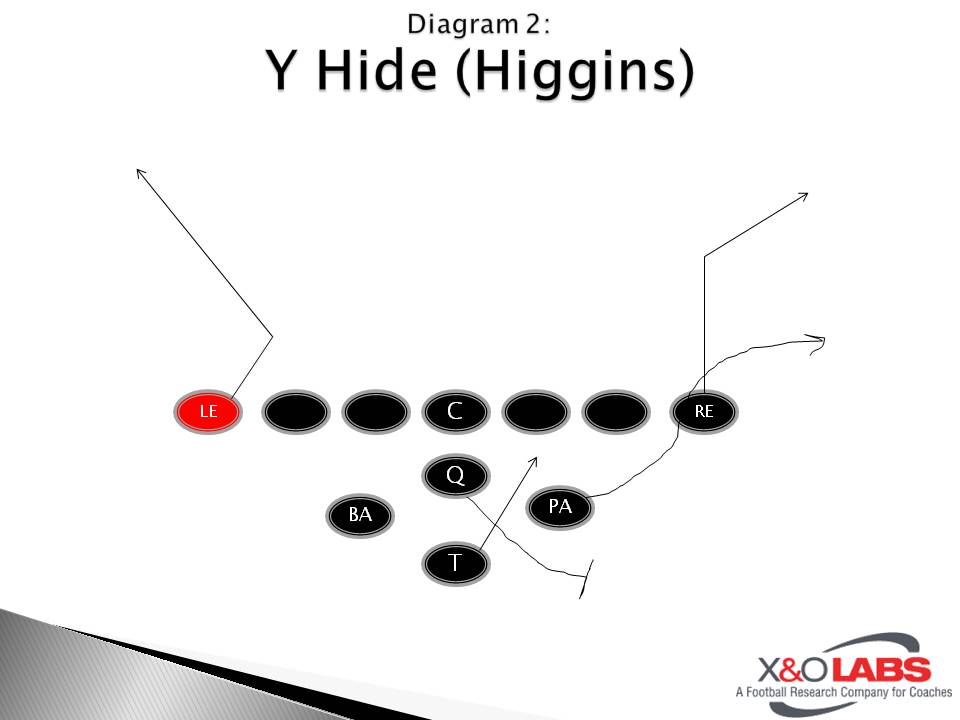By Mike Kuchar
Research Manager
X&O Labs
Two weeks ago, X&O Labs released its report on the Diamond formation run game. While we realized its balanced, three-back structure can produce a myriad of problems for defenses to defend the run, all of which we detailed in the prior report, we had no idea how many coaches were gashing coverages by putting the ball in the air. Although the Diamond formation may provide some generous one-on-one matchups on the perimeter (a key ingredient for the quick game) we’ve found that the majority of coaches will employ some play-action concepts in the formation.
Since the Diamond is still a relatively novel idea (although the T-formation old timers may tell you differently) the following report does not contain a ton of statistics and figures. It’s more of a collection of examples from coaches that reached out to us and wanted to pass their ideas along to you. It’s verbatim, straight from our surveys. As if that is not generous enough, they’ve even offered to answer any questions you may have. So when you’re done reading, feel free to ask questions or make comments below and these coaches will respond. By the same token, you’re always welcome to share what you’re doing at any time by contacting us (I can be reached at [email protected]).
We’ve broken down the Diamond formation play-action game into the following categories:
- Power Pass: Since we found the gap scheme was the most used run scheme out of the Diamond formation, we figured we’d start there. The intent is to put pressure on the perimeter of the defense.
- Iso Pass: This is based off the isolation run scheme with the intent to get behind the interior of the second level defenders.
- Boots/Nakeds: For those that have more athletic QBs running the system, this scheme provides a duel threat run/pass option on the perimeter.
- Specials: Some changeups that can provide big play opportunity.
Case 1: Power Pass
Play Concept (Power Pass)
Contributor: Mike O’Donnell, Rush City High School, Rush City (MN)
The most production pass action we have employed from the Diamond set has been to fake our power/lead play. We’ll look for the play side end who runs a post-corner route. At the same time, our near back who would be a kick out blocker on the defensive end in our lead play, would slide out into the flat after faking a block on the defensive end. This power/lead action tends to freeze the defense and keeps them committed to stopping the off-tackle action. By forcing the defense to check for the run first, we then get a two-on-one look with our play side end deep to the corner and our near back in the flat. At the same time, our backside end runs a post and looks for a deep opening in the middle of the football field. If the free safety moves out to help cover the post-corner route by the play side end, the post is wide open to the backside end. Diagram 1.

Play Concept (Y Hide)
Contributor: Dan Higgins, Cocoa Beach High School, Cocoa Beach (FL)
- QB: Play action the tailback to the play side TE side.
- TB: Fake the dive and block the DE to the outside.
- PA: Run track to the outside of the DE and run an arrow route to the goal line cone.
- Play Side TE: Release to the inside and get cone in the corner of the end zone.
- Backside TE: Release inside and hide for a 3 count and then get to the backside cone (flag route).
QB Check Downs: (diagram 2)
- Look and pump play side
- Get depth and throw to the backside TE









